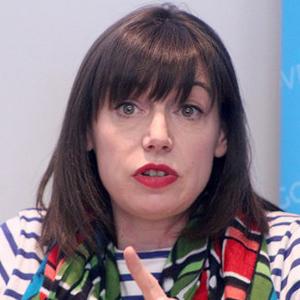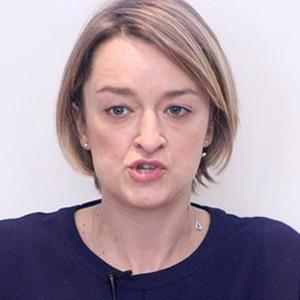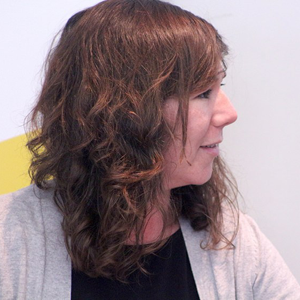Comment
Women uncovered: gender imbalance in politics and the media
The 2010 election was dominated by male politicians talking to male correspondents.
The 2010 election was dominated by male politicians talking to male correspondents. Jen Gold hears three journalists consider whether women are likely to play a bigger role in the coverage of this election – both as journalists, and as parliamentary candidates
Not a single woman appeared on either side of the podium in the televised leaders’ debates of 2010. Five years on, the debates won’t be men-only. Thanks to the new seven-way format, three female party leaders (the SNP’s Nicola Sturgeon, the Greens’ Natalie Bennett, and Plaid Cymru’s Leanne Wood) will line up alongside David Cameron, Ed Miliband, Nick Clegg, and Nigel Farage on 2 April - while ITV’s Julie Etchingham will moderate. But is this evidence of genuine progress in combatting gender inequality in our political system and media?
As part of our Women Leaders Series – which is supported by EY – the Institute for Government convened a panel of journalists representing the print, broadcast, and digital media: Beth Rigby (Deputy Political Editor, Financial Times), Laura Kuenssberg (Chief Correspondent, Newsnight), and Anoosh Chakelian (Deputy Web Editor, New Statesman). In a discussion chaired by Professor Suzanne Franks from City University’s Department of Journalism, we wanted their perspectives on what a more equal election would look like.
The panel’s discussion pointed to three questions that we need to ask ourselves after this May’s election:
1.Voter imbalance – have the missing one million women been found?
Harriet Harman’s pink ‘battle bus’ has generated a lot of controversy on its tour of the country. Yet as Beth Rigby pointed out, media hype and political point-scoring has “overshadowed … a serious point”: one million fewer women than men are thought to have voted in the last election. Certainly, the panel felt that the significant under-representation of women in Parliament contributes to the sense of alienation from politics. Nevertheless, Laura Kuenssberg pointed out that the pink bus has not been a huge PR disaster: it has, she said, generated a level of publicity that Labour spin doctors could only have dreamed of.
2.Will there be more women in Westminster on the 8th May?
Women currently account for 22.8% of MPs (148 out of 650). While this is higher than any previous parliament, Westminster still lags behind the Welsh Assembly, the Scottish Parliament, the majority of EU member states, and Britain’s cohort of MEPs. As Kuenssberg noted, this “small pool” of women MPs makes it hard for programmes such as Newsnight to secure female representation.
So what of 2015? Rigby pointed to recent projections from the Electoral Reform Society that offer compelling reading. Current polling suggests that female representation will rise to 29.5% after the 7 May – a result that would catapult the UK from 56th to 36th in global rankings. Labour and the Conservatives would see their representation rise from 34% to 41% and 16% to 20% respectively. However, the outlook is far bleaker for the Liberal Democrats. Most of the party’s women MPs hold seats in marginal constituencies, meaning they could be left with just one woman MP after the election. As Anoosh Chakelian noted, that could see the Lib Dems opting for all-women shortlists – an approach already used by Labour – in the near future.
Stereotyping by the media and an almost relentless focus on clothing and appearance does little to encourage more women to stand for election: the panel observed that women are still held to a different standard and still portrayed in a different way. We are unlikely ever to see “Downing Street Catwalk” headlines scrutinising the fashion sense of newly appointed male cabinet ministers.
The broader treatment of females in the public eye doesn’t help. Even as a journalist, Kuenssberg commented, “you get a huge amount of stick about what you look like, what you wear, what you say, that male people on air just do not get. And some of it is really unpleasant, and some of it appears in august publications.” As Chakelian also observed, in happily giving front-page attention to Nigel Farage’s recent comments about breastfeeding and women’s pay, the media offered a loud voice to the kind of “straight-up sexism” we thought we’d left back in the ’80s.
It’s not just the newspapers that treat women unfairly. Kuenssberg pointed out that social media “amplifies the best and worst of human behaviour”, and women in the public eye are often the targets of vitriolic attack. For many women, the prospect of their family being scrutinised in the press is considered too high a price to pay for becoming an MP. The appalling abuse directed at Jenny Willott MP after she discussed the challenges of balancing parliamentary duties with parenthood on Inside the Commons was highlighted as a case in point.
The panel did, however, offer a glimmer of hope. The use of social media has changed since 2010 – with growing numbers of people using these channels to call out newspapers and online commentators on their portrayal of women. This challenge won’t necessarily change behaviour, but it does at least give these issues a thorough airing.
3.Who has covered the election?
The panel pointed to some high-profile examples of women securing more prominent roles on and off air since 2010. Katharine Viner is about to become the Guardian’s next editor-in-chief; Jackie Long and Cathie Newman regularly front Channel 4 News; and three out of Newsnight’s four presenters are now women. The rise of online news platforms was also praised by Chakelian as offering a space for “a whole new range of voices”, including those of many more women.
But it was broadly acknowledged by the panel that it is naïve to suggest that those covering the news are a “mirror of the country that we live in”, as Kuenssberg put it: women are still heavily under-represented in political journalism. Rigby pointed out that only 19% of journalists in the parliamentary lobby are women, and very few ever return to the lobby after having children. In this respect, they face many of the same obstacles as women MPs in balancing childcare arrangements with parliamentary hours and the demands of the 24-hour news cycle.
The panel also acknowledged the persistent under-representation of women commentators and experts on political affairs programmes. The feeling was that women are often more reluctant to put themselves forward. The panel emphasised that it is important to be honest about the challenges women face in dropping family commitments or altering childcare arrangements to appear on programmes at extremely short notice, and Kuennsberg and Rigby – who has two small children – said that mothers tend to be more reluctant than fathers to sacrifice time with their children in pursuit of media appearances.
Ultimately, the event confronted its audience with many pressing questions; and it’s up to all those with an interest to suggest some answers. Can broadcasters do more to secure female representation? For instance, could greater use be made of pre-recorded segments, could TV or radio studios be made more child-friendly, and could people be given more notice of interview slots? Do communications teams make assumptions about the availability of female experts, unconsciously protecting them from a demanding media? And just how much impact does under-representation have on the way issues are covered – and thus, in turn, on public opinion? Giving space and time to the issues women care about – and steering clear of outdated and unsavoury gender stereotypes – may go some way towards reaching that missing million.
- Keywords
- General election Diversity and inclusion
- Publisher
- Institute for Government


